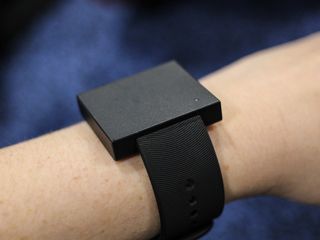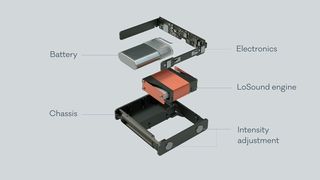Lofelt Basslet is more than just a subwoofer for your wrist

Honestly, I'm not into the idea of wearing a smartwatch full-time. I've never been a watch person and having something on that big feels almost intrusive. But weirdly, I found myself excited about the Lofelt Basslet, despite the fact that all it does is vibrate on your wrist.
It sounds kooky, I know. Why the hell would anyone want anything as plain and simple as this little wristlet that buzzes along to your music? Well, I hate to offer this kind of explanation, but it's not for everyone — it's for enthusiasts.




See, I'm really enthused by electronic music. Trance, techno, house, drum and bass, goa psy — if it's got a hard beat and a weird-looking dude from Europe behind the turntable, I'm there. I love going to concerts and shows, but they've become less frequent as my life has become busier. The Basslet can imitate that sort of experience, though, so I can easily transcend to that place with the actual vibrating subwoofers. That sort of feedback helps me get into the groove and feel that atmosphere. And if you flip this thing so it's on the bottom of your wrist, it's even more effective.
If it's got a hard beat and a weird-looking dude from Europe behind the turntable, I'm there.
All this is possible due to the vibrotactile LoSound engine featured in the Basslet. The wearable produces frequencies up to 250Hz that, Lofelt claims, still remain silent to the outside world. Your seat partner on the train will have no idea you're secretly raving. The music is transmitted to the Basslet through a separate wireless connector, which plugs into a 3.5mm headphone jack. The two snap together with a pair of magnets and charge at the same time with any Micro-USB cable.
There's also the more practical way of using the Basslet — if you're a virtual reality head, that is. Leave the adapter plugged into the headphone jack and then pop into a game like Gunjack 2: End of Shift on the Daydream View. Every time you get hit, you'll feel feedback from the game on your wrist. It adds an almost-tangible element to even the most entry-level VR experience.
I've yet to try the Basslet for an extended period of time, so I can't speak yet to how comfortable it is to actually walk and wear. But I do like the idea of added immersion when you're just trying to get through the day. Isn't it better to walk and jam out instead of sulking about everything that's wrong?

It's also worth considering the real world application of this sort of technology. The Basslet's clever way of shoving all that vibrahaptic feedback into such a small package means it can be used in cars. One major auto manufacturer, which Lofelt has not yet disclosed, has already invested in bringing this technology into its cars. It could be used in situations like helping you navigate the road without looking at a screen, or shaking the seat if there's an accident up ahead. Human beings are visceral; regardless of whether the world features more touch screens, we'll always want that haptic feedback. Might as well figure out a way to do so efficiently and unobtrusively.
Be an expert in 5 minutes
Get the latest news from Android Central, your trusted companion in the world of Android
Florence Ion was formerly an editor and columnist at Android Central. She writes about Android-powered devices of all types and explores their usefulness in her everyday life. You can follow her on Twitter or watch her Tuesday nights on All About Android.
